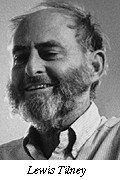
HONORS
National Academy
Three members of the University are among the 60 new members elected
to the National Academy of Sciences this year. They are:
Dr. Douglas S. Massey, the Dorothy S. Thomas
Professor of Sociology and Population Studies and chair of sociology in
SAS, whose research and writing on race, ethnicity, and urban inequality
in America-as well as his studies in international immigration-have earned
him numerous awards and prizes. Publishing frequently in Spanish as well
as English, he also writes on Latin American cultures and particularly on
Mexico. His 1994 American Apartheid: Segregation and the Making of the
Underclass won three major awards, and he recently received the Southwestern
Book Award for Miracles on the Border, which explores Mexican migration
to the U.S. He is past president of the Population Association of America.
Dr. Paul J. Steinhardt, the Mary Amanda Wood
Professor of Physics in SAS, whose work ranges from highly theoretical work
on the properties of elementary particles and superstrings related to cosmology
to the study of astrophysical observations that test cosmological models.
In several books (among them Inflationary Cosmology and Quasicrystals:
The State of the Art) and over a hundred papers and articles he has
explored the birth and development of the universe--while also winning an
award for faculty advising. He has been a Guggenheim Fellow, a Sloan Fellow,
and Phi Beta Kappa National Lecturer among other honors. He also holds,
with Phillip Taylor, several patents for methods and apparatus for eliminating
moiré interference using quasiperiodic patterns.
Dr. Lewis G. Tilney, the Strausz-Hupe Term Professor of Biology who is known throughout the world for his work on the fundamental mechanisms that mediate cell motility and the scaffolding that maintains the shape of cells. Through molecular genetics he is presently studying, under a major NIH grant, the formation of bristles in Drosophila pupae as a model system for understanding how actin filaments pack into bundles, how the length and number of the filaments is determined, and how these bundles interact with the cell surface to help determine cell form. The author of some 120 papers on work done here and on sabbaticals to Japan, Kenya and France, he is also noted for stimulating interdisciplinary research within his school and across school lines.
Next Week: Five Guggenheim Fellowships and
other honors to Penn faculty. Also delayed to next week are details of the
implementation of the new vending ordinance and coverage of the April 22
Council discussions on consultation and vending.
Almanac, Vol. 44, No. 32, May 5, 1998
FRONT PAGE | CONTENTS | JOB-OPS | CRIMESTATS | BETWEEN ISSUES | MAY at PENN